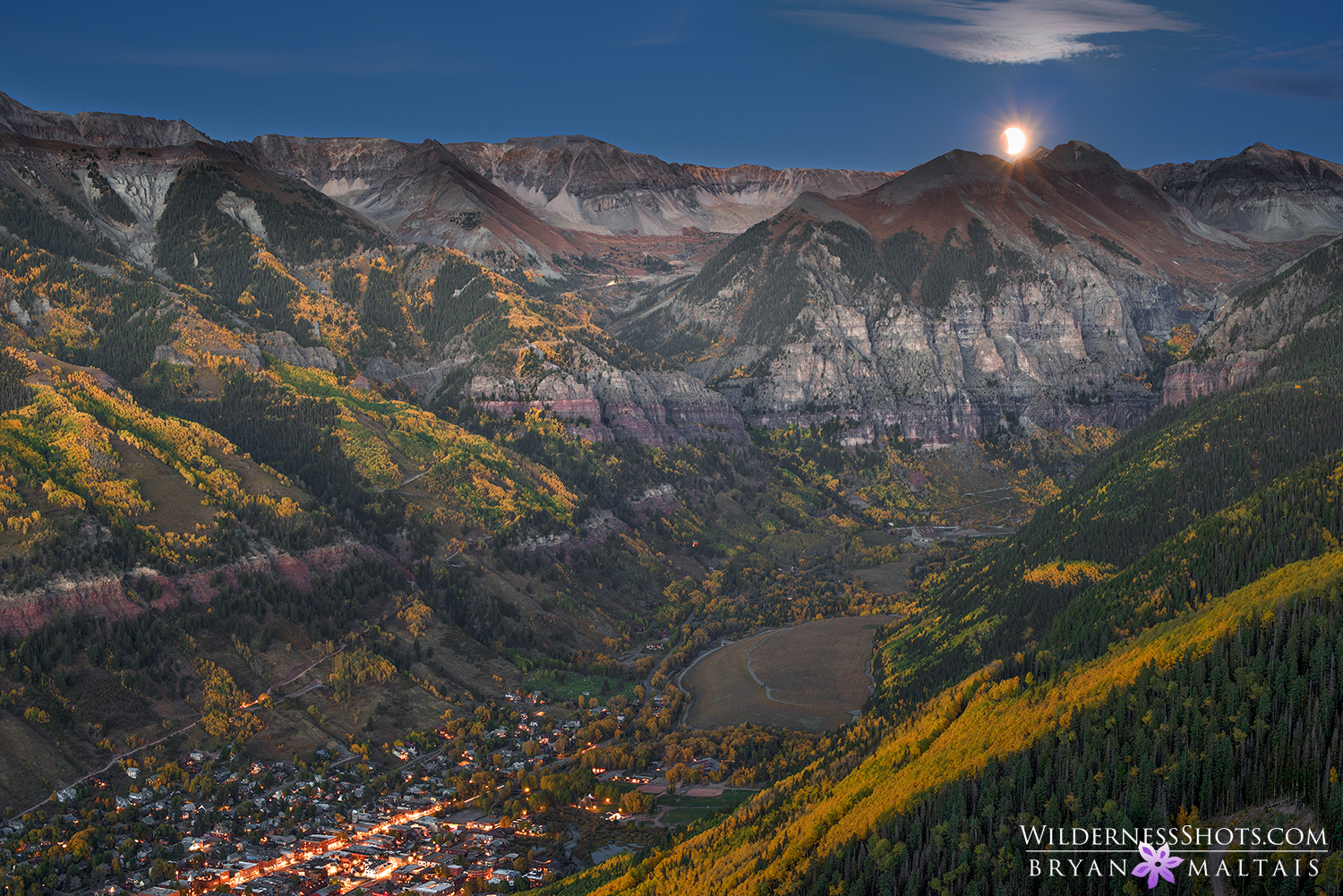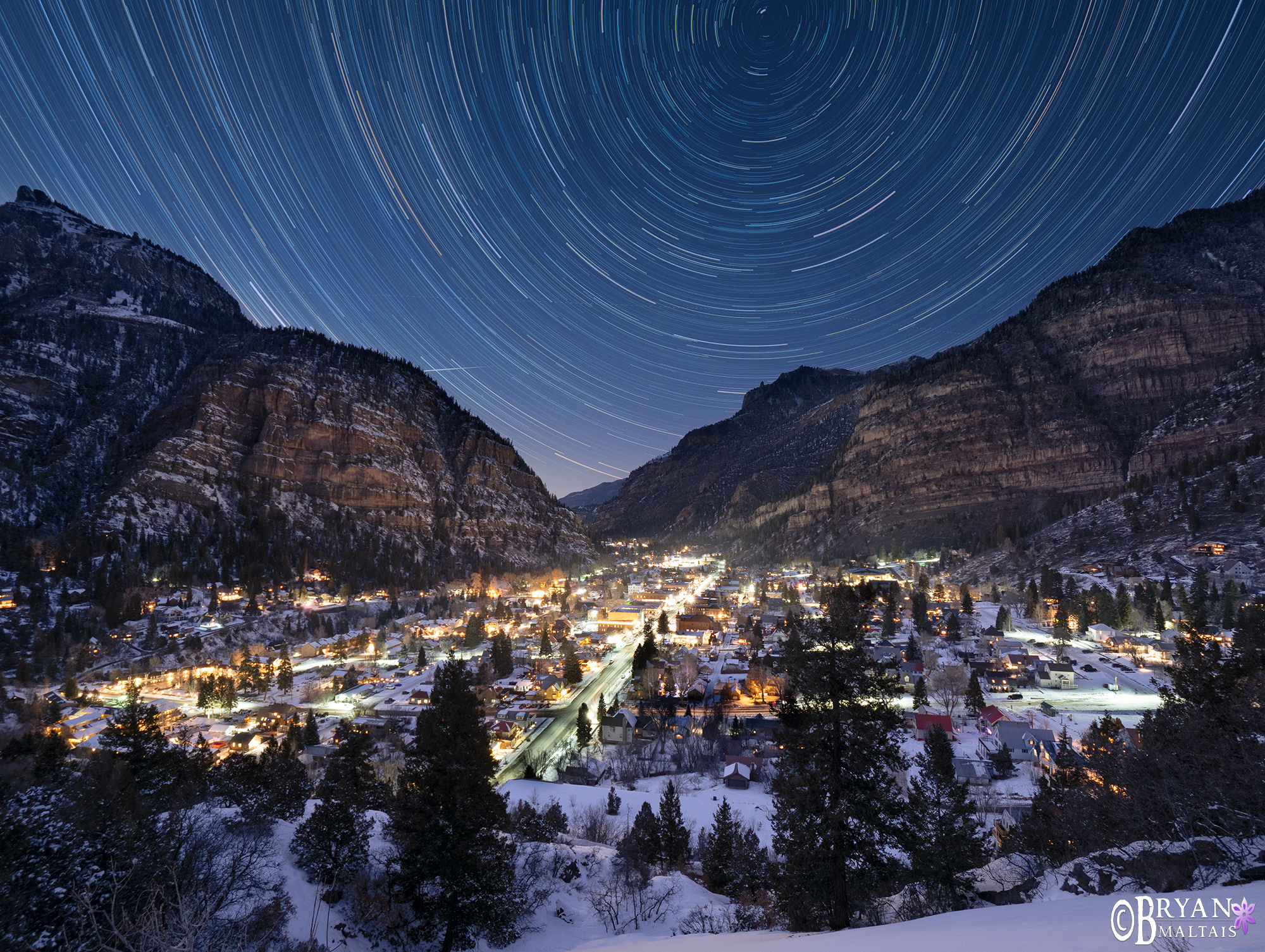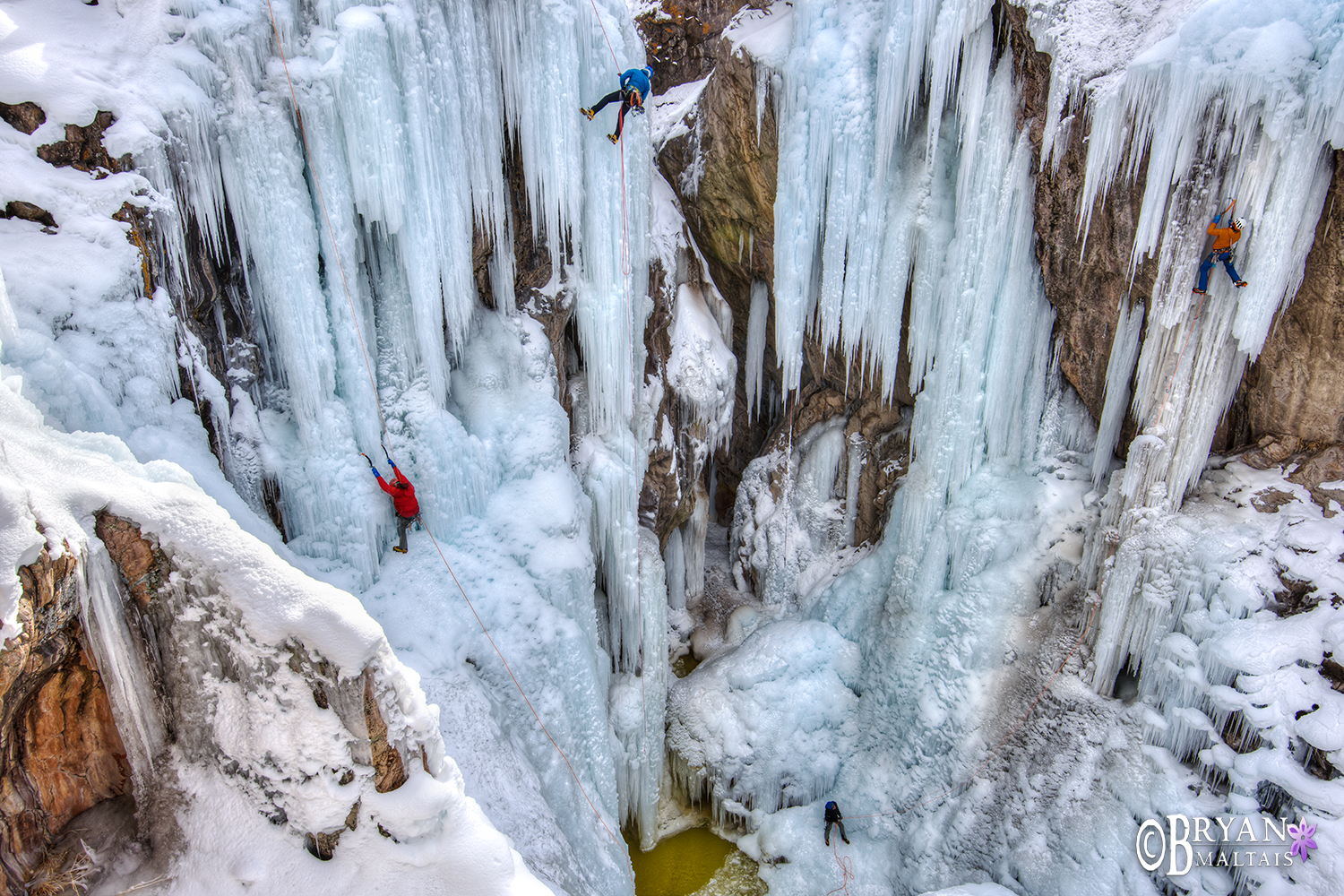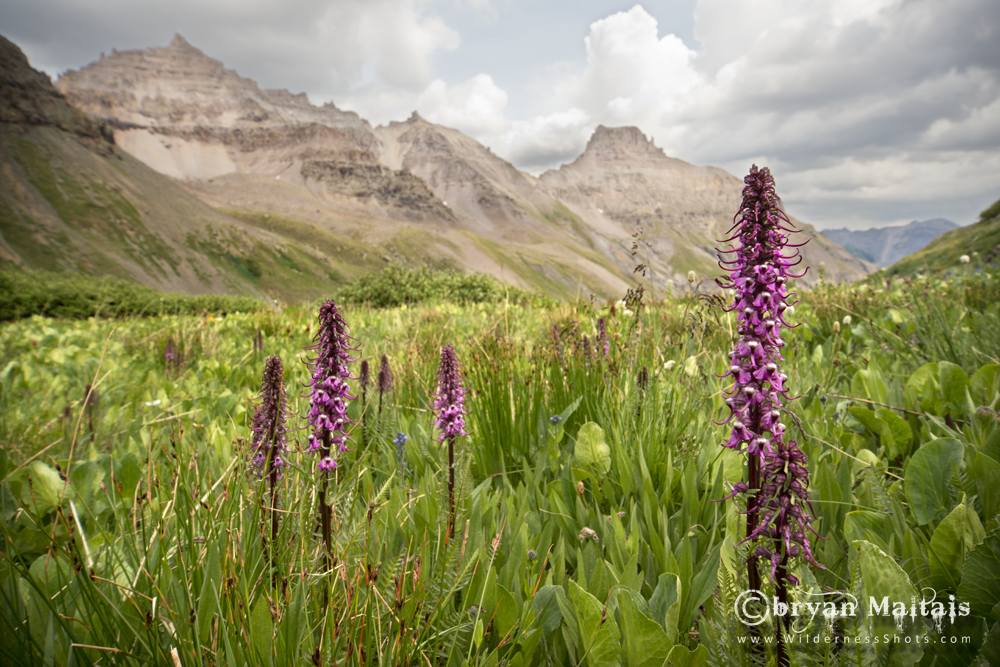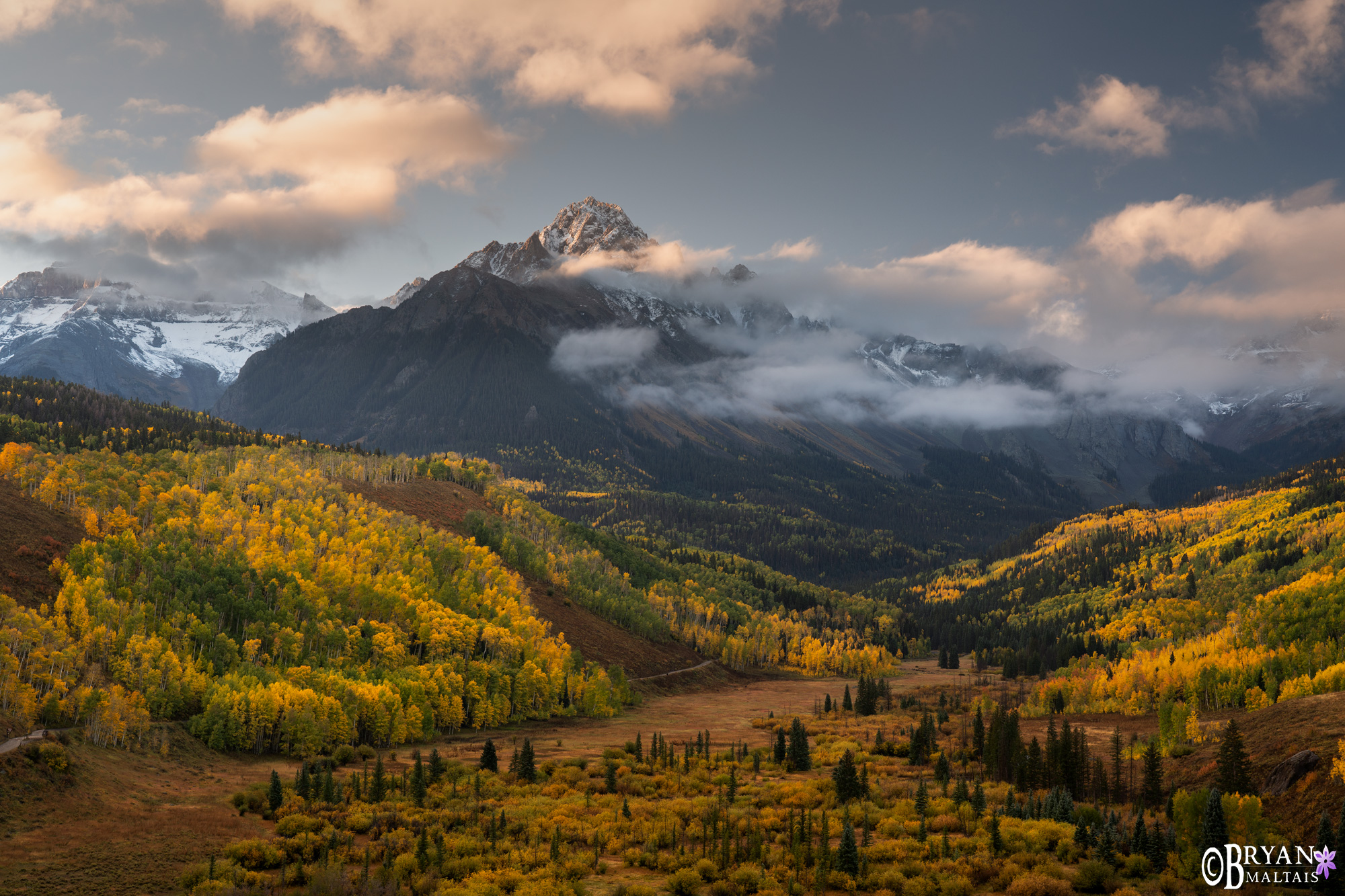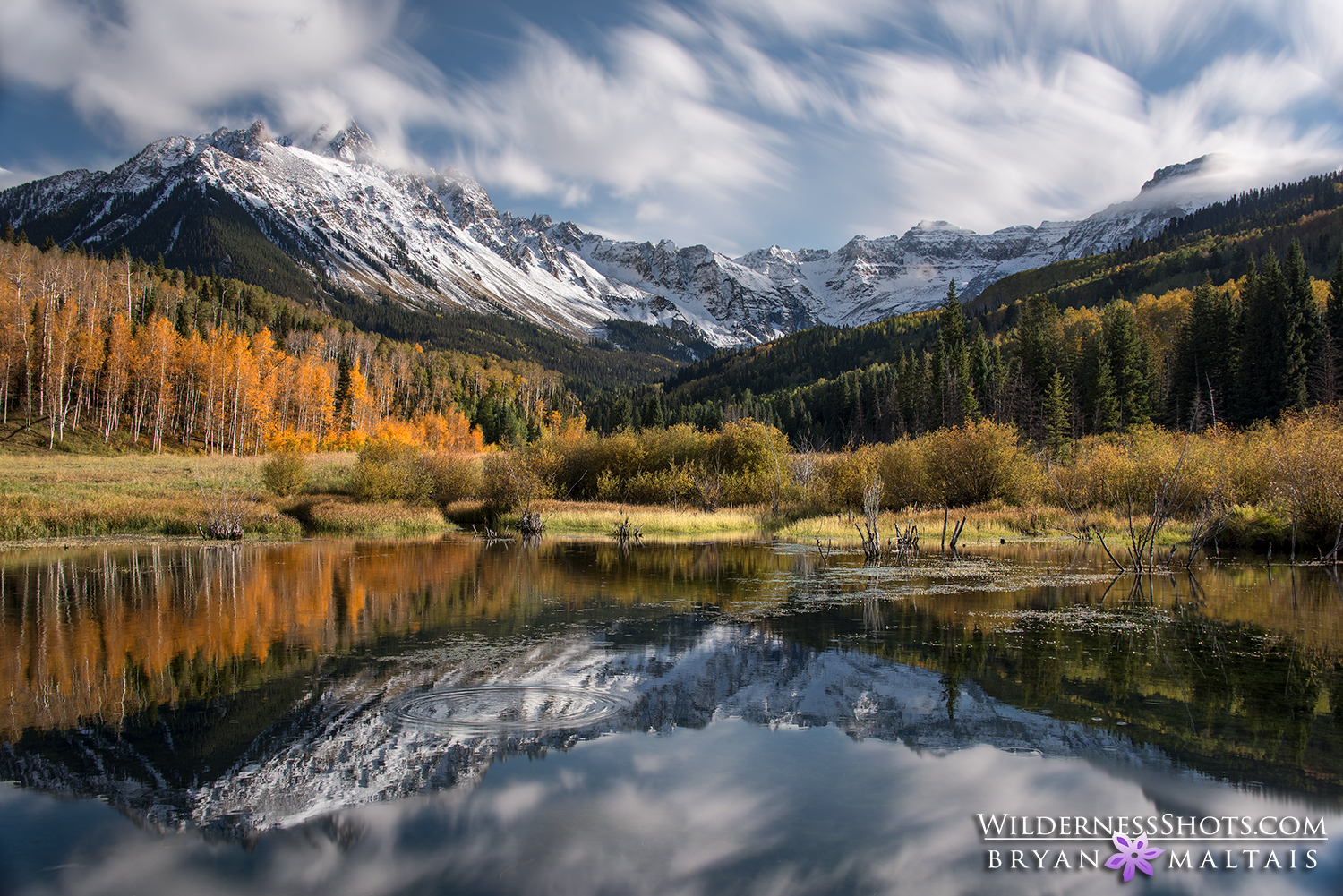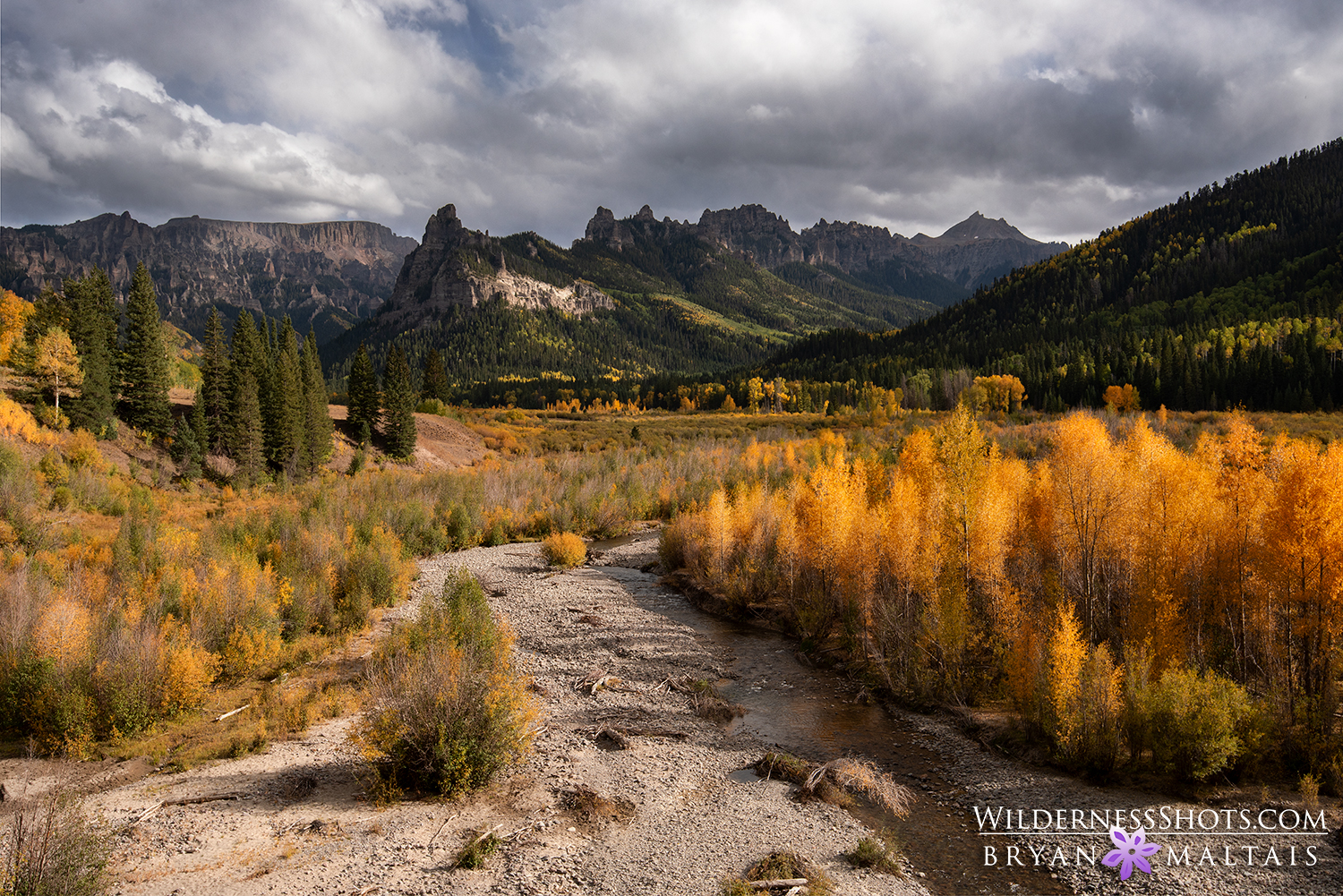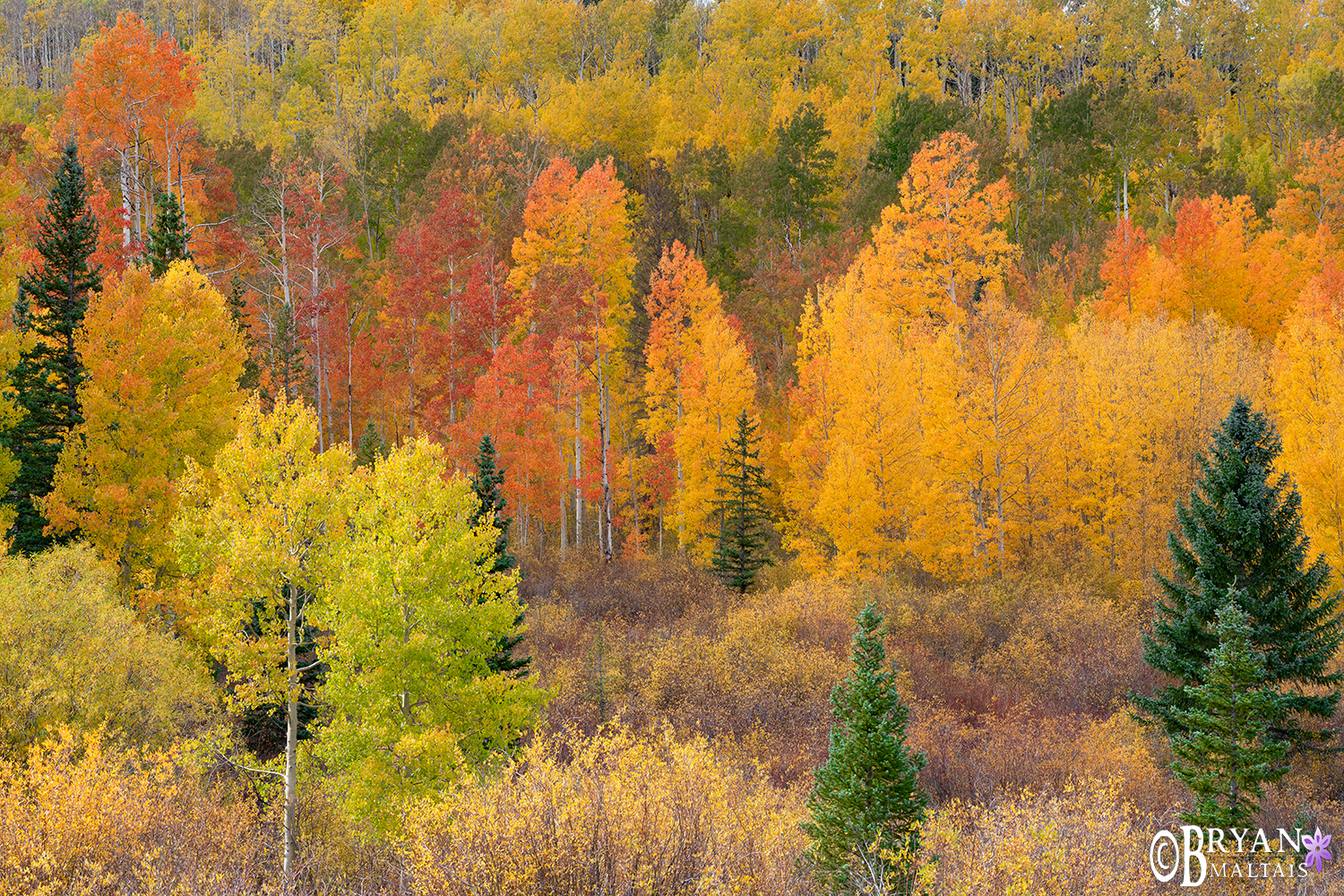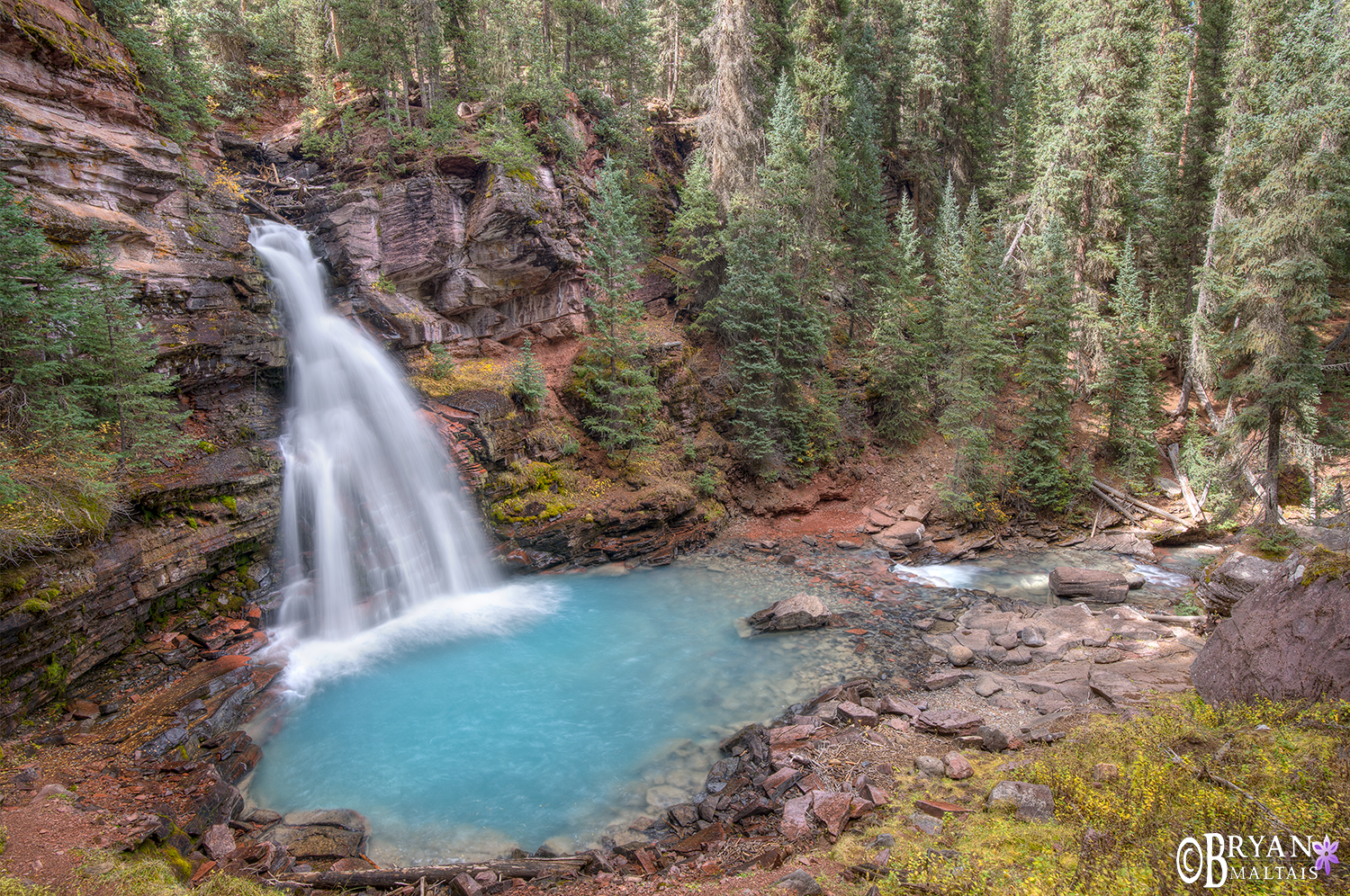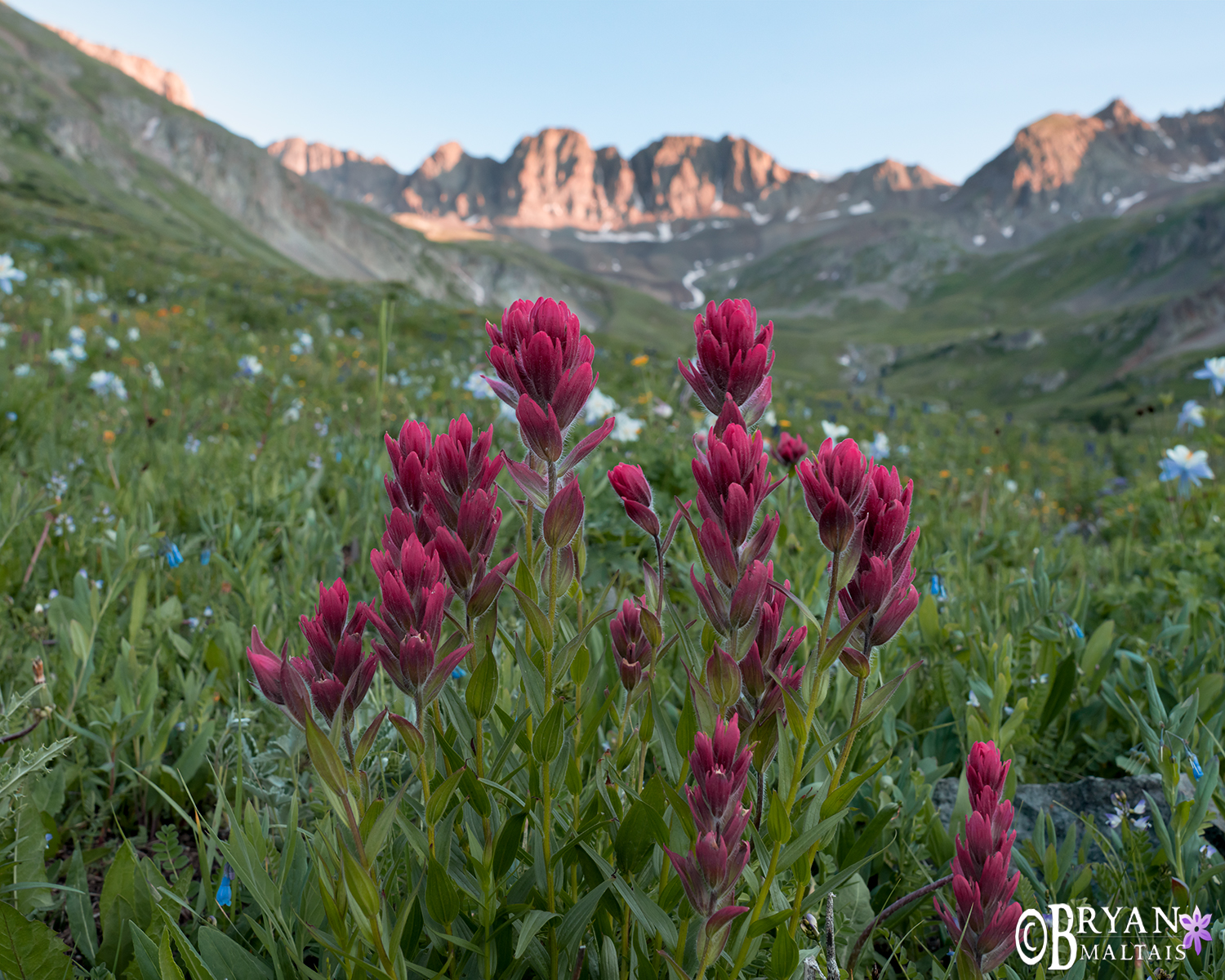
Colorado San Juan Mountain Photography: The Best Photos from Telluride, Ouray, Ridgway and Silverton
View the entire San Juan Mountains gallery and order prints.
The San Juan Mountains are the epitome of the Colorado Rockies. They have arguably the best landscape scenery that Colorado offers. This is a sample of some of my best photo prints from the Colorado San Juan Mountains near Telluride. The San Juans occupy the southwest corner of Colorado with a dense concentration of beautiful landscapes and towns. Telluride is the best known Jewel of the San Juans, but other alpine towns that may ring a bell include Ouray, Ridgway, Silverton and Durango. Mountains and natural areas of the San Juans include the San Miguel Mountains, The Dallas Divide & The Sneffels Range, and the Weminuche Wilderness to name a few. Below are some of the best photo locations in the San Juan Mountains.
1. Telluride, Colorado
A free gondola ride above Telluride brings you to Mountain Village where you have a bird’s eye view of the town below. This photo shows a lunar eclipse happening over the city lights of Telluride glowing at dusk. The Aspens are at peak fall colors on the slopes. On the left side you can make out the switchbacks of a road going up the mountain side. That’s Imogen Pass Road. It’s an epic jeep trail that goes up and over the ridge down into Ouray.
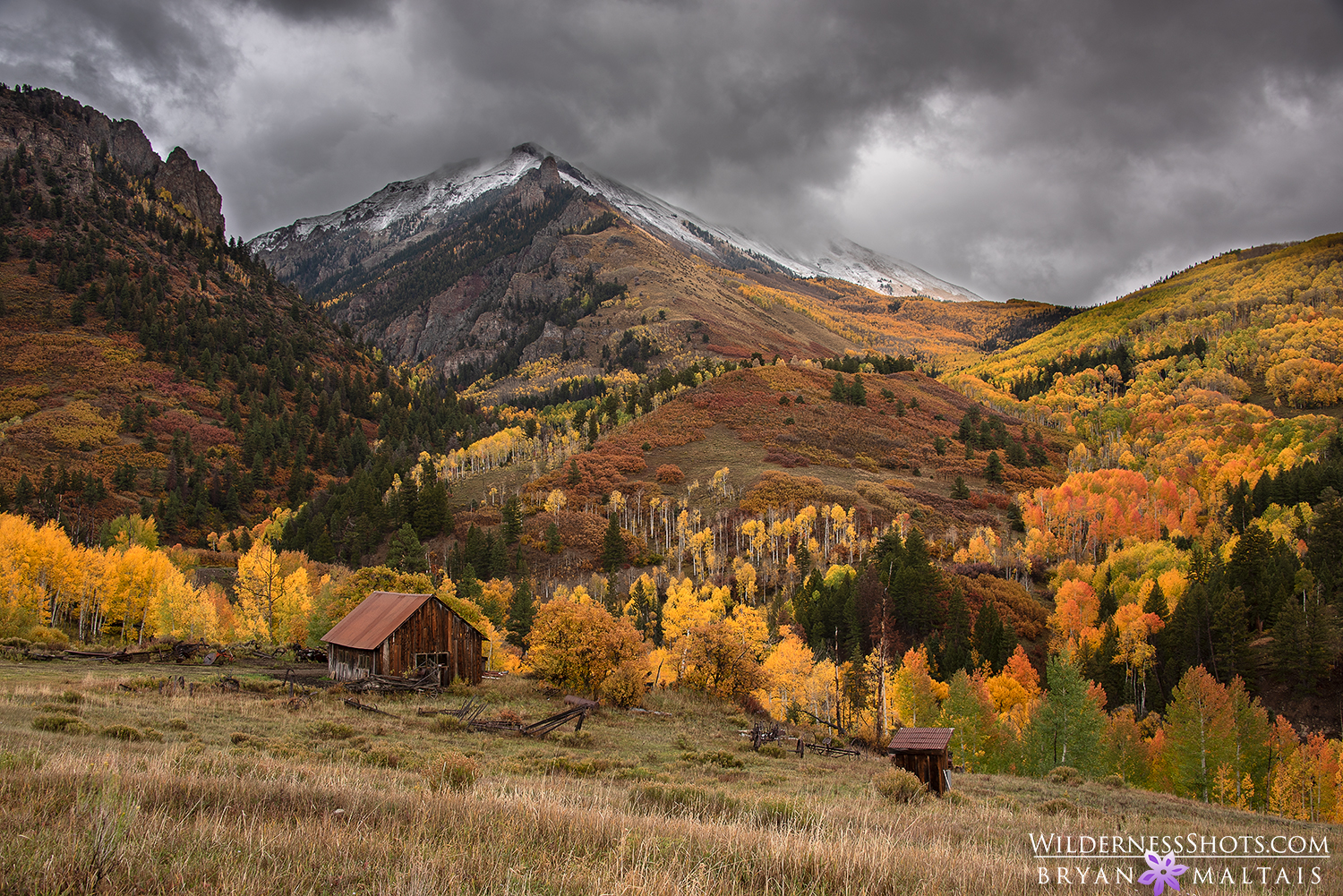 Last Dollar Road is a 21 mile scenic wonderland with jagged peaks, rustic ranches and colorful aspen groves. Rather than driving from Ridgway to Telluride on highways 62 and 45, you cut the corner by driving through the backcountry on Last Dollar Road. It offers continuous beauty like this preserved homestead nestled in the peaks of the Dallas Divide near the Telluride airport. I’ve seen compact sedans negotiate this mild 4×4 road, but they scrape bottom. Suburu’s are sufficient in dry weather. The road turns to slick mush in snow or rain and requires a 4×4 with knobby tires.
Last Dollar Road is a 21 mile scenic wonderland with jagged peaks, rustic ranches and colorful aspen groves. Rather than driving from Ridgway to Telluride on highways 62 and 45, you cut the corner by driving through the backcountry on Last Dollar Road. It offers continuous beauty like this preserved homestead nestled in the peaks of the Dallas Divide near the Telluride airport. I’ve seen compact sedans negotiate this mild 4×4 road, but they scrape bottom. Suburu’s are sufficient in dry weather. The road turns to slick mush in snow or rain and requires a 4×4 with knobby tires.
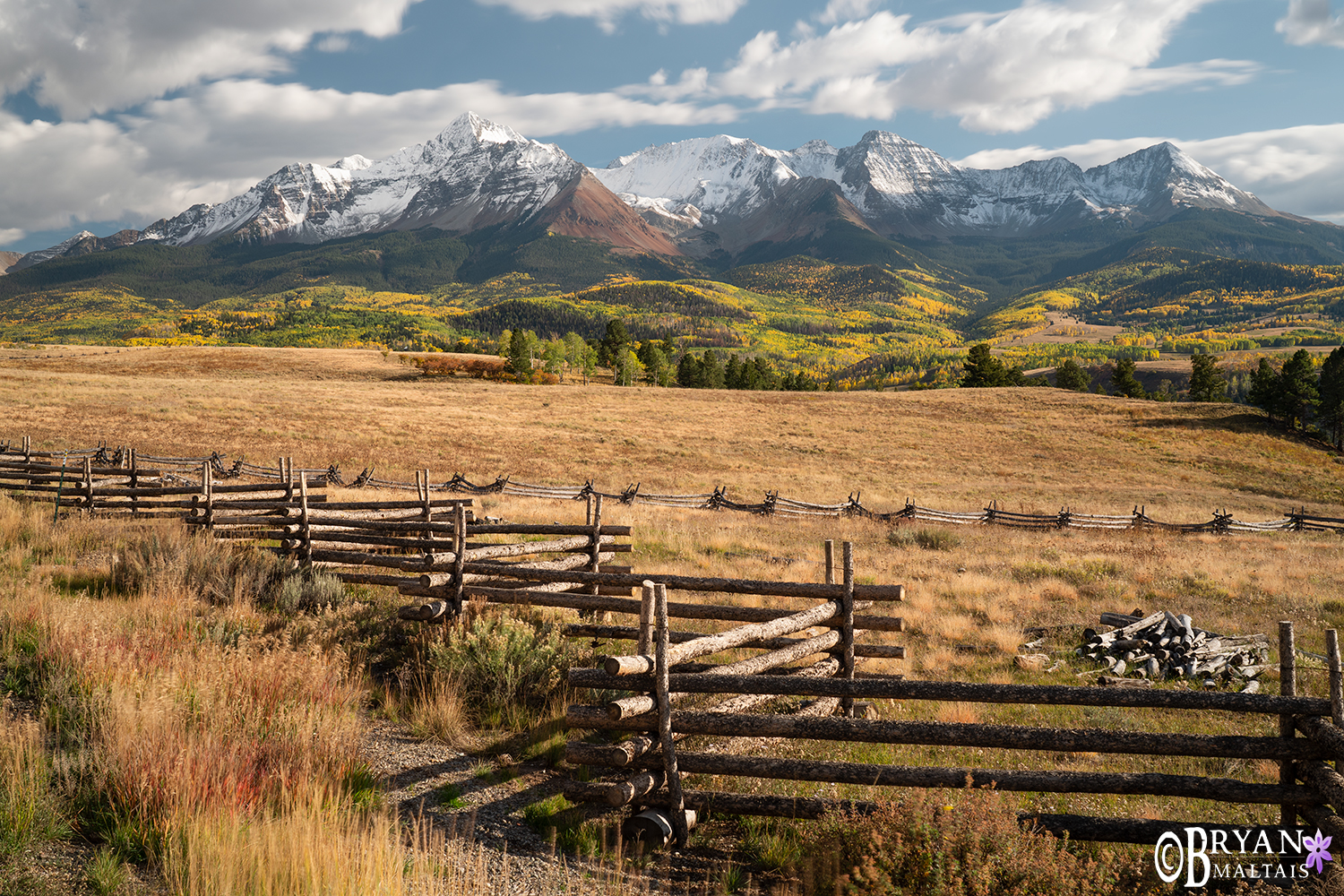 Mt. Wilson and Wilson Peak form the backbone of the San Miguel Mountains, which dominate the skyline southwest of Telluride.
Mt. Wilson and Wilson Peak form the backbone of the San Miguel Mountains, which dominate the skyline southwest of Telluride.
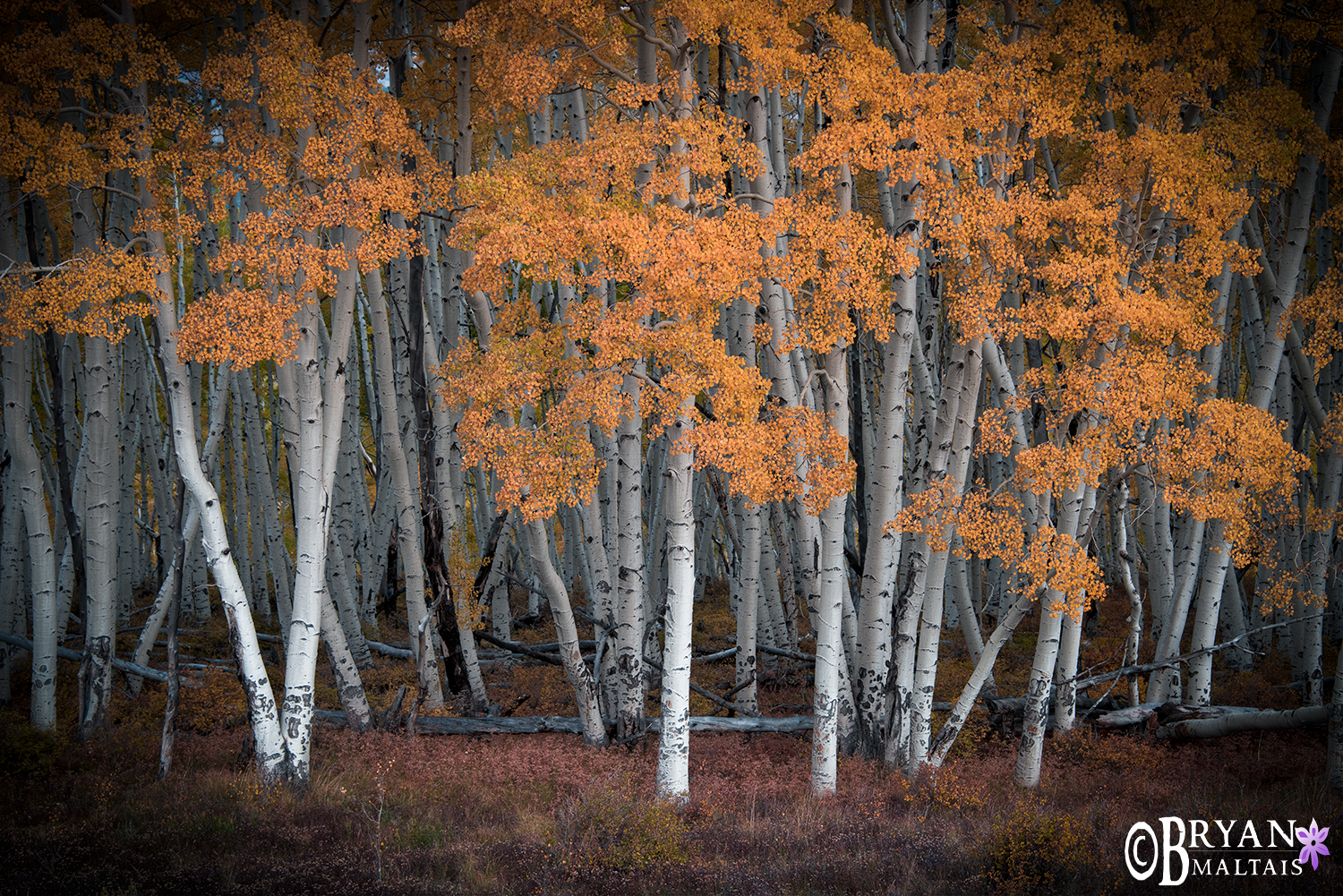
2. Ouray, Colorado
I took this photo of Ouray, Colorado on a frigid February night. I waited until full darkness to capture full glow of the city lights illuminating the snow and canyon walls. I photographed the star trails by taking consecutive photos for 90 minutes. When you point the camera due north and expose for a long period, the result is perfectly round star trails swirling around Polaris as the Earth spins. Ouray is a famous off-roading mecca because so many intense 4×4 trails empty near town.
Ouray is also famous for the Ouray Ice Climbing Park located in the Uncompahgre Gorge. Huge icicles juxtapose tiny ice climbers for scale, making for spectacular photos.
Yankee Boy Basin is a world-class destination for wildflower photography, and the starting point for epic hikes. Camp Bird Road begins just south of Ouray and takes you through and above Yankee Boy Basin. Near the half-way point you pass Twin Falls on Sneffels creek. Only lifted 4×4’s can make it to the top.
3. Ridgway, Colorado
This is mighty Mt. Sneffels from County Road 7 on a perfect morning in autumn colors. While Telluride gets most of the fanfare in the San Juan Mountains, the area around Ridgway is thick with incredible landscapes. Just outside Ridgway, County Roads 5,7 and 9 lead to amazing views of the Dallas Divide and Sneffels Range.
Mt. Sneffels in vivid fall colors reflects in a beaver pond with trout surfacing to feed. A neutral density filter allowed a 20 second exposure to blur the motion of the clouds.
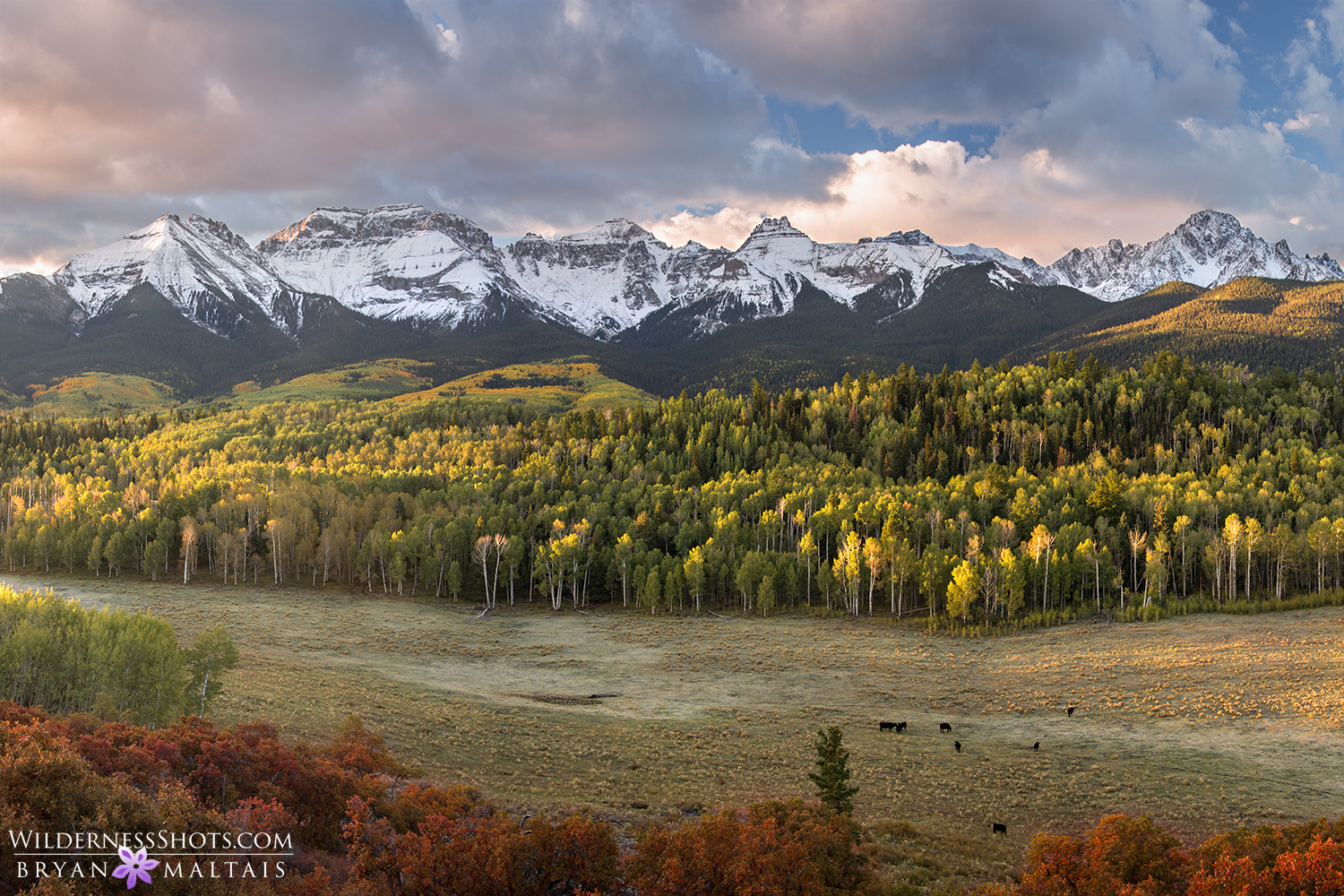 This is the Sneffels Range at sunrise with a heavy coat of early fall snow. The brilliant crimson scrub oak contrast nicely with the minty green aspens just beginning to change into autumn colors.
This is the Sneffels Range at sunrise with a heavy coat of early fall snow. The brilliant crimson scrub oak contrast nicely with the minty green aspens just beginning to change into autumn colors.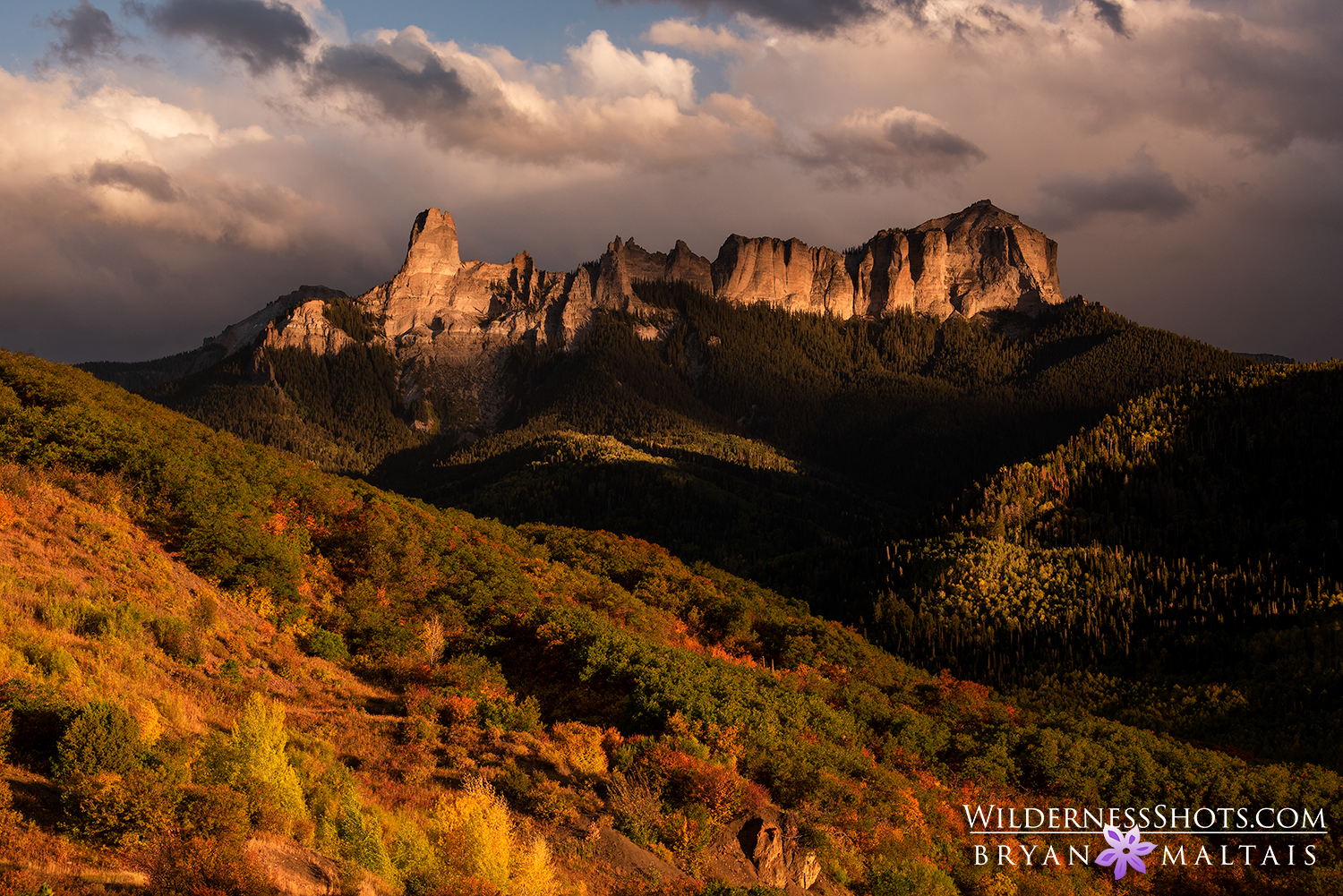 Ridgway is also close to Owl Creek Pass where Courthouse Mountain and Chimney rock form a beautiful mountain massif.
Ridgway is also close to Owl Creek Pass where Courthouse Mountain and Chimney rock form a beautiful mountain massif.
4. Wildlfower Basins of Colorado
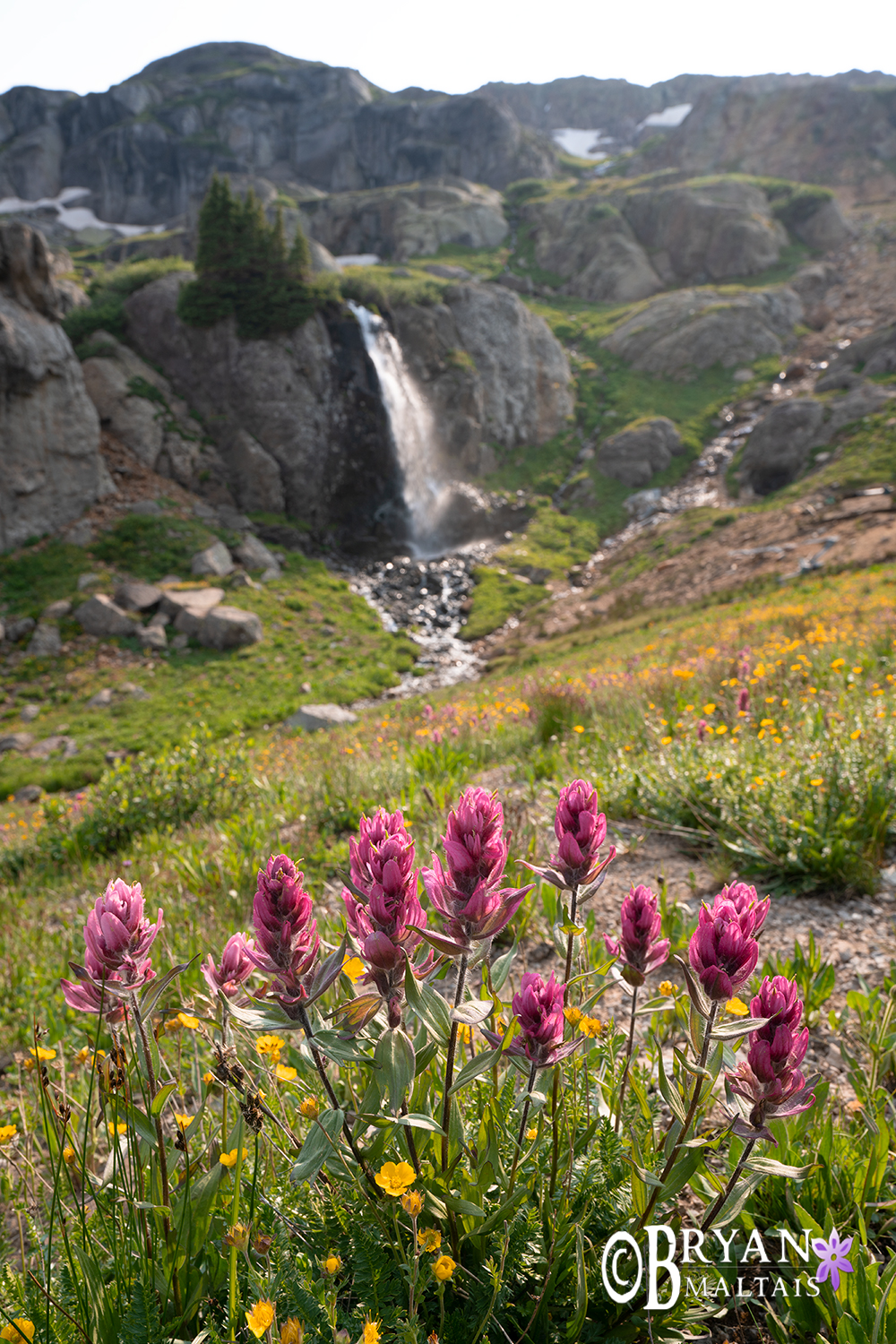 Colorado’s spectacular wildflower basins occur above tree line at 11,500-12,500 ft. This is called the subalpine zone. Conditions in this nose bleed section create perfect microclimates for wildflowers to thrive. It rains regularly unlike Colorado’s lower regions that are hot and arid, and the cool temperatures preserves moisture. Without shade from trees, photosynthesis can crank in the full sun, fueling a high growth rate in the short growing season. The basins are typically buried beneath snow until June. Most subalpine flowers are perennials that shoot up from established root systems once the snow melts. Most flowers peak by mid July and some remain in bloom until mid August. They’re withered memories by the time late September rolls around.
Colorado’s spectacular wildflower basins occur above tree line at 11,500-12,500 ft. This is called the subalpine zone. Conditions in this nose bleed section create perfect microclimates for wildflowers to thrive. It rains regularly unlike Colorado’s lower regions that are hot and arid, and the cool temperatures preserves moisture. Without shade from trees, photosynthesis can crank in the full sun, fueling a high growth rate in the short growing season. The basins are typically buried beneath snow until June. Most subalpine flowers are perennials that shoot up from established root systems once the snow melts. Most flowers peak by mid July and some remain in bloom until mid August. They’re withered memories by the time late September rolls around.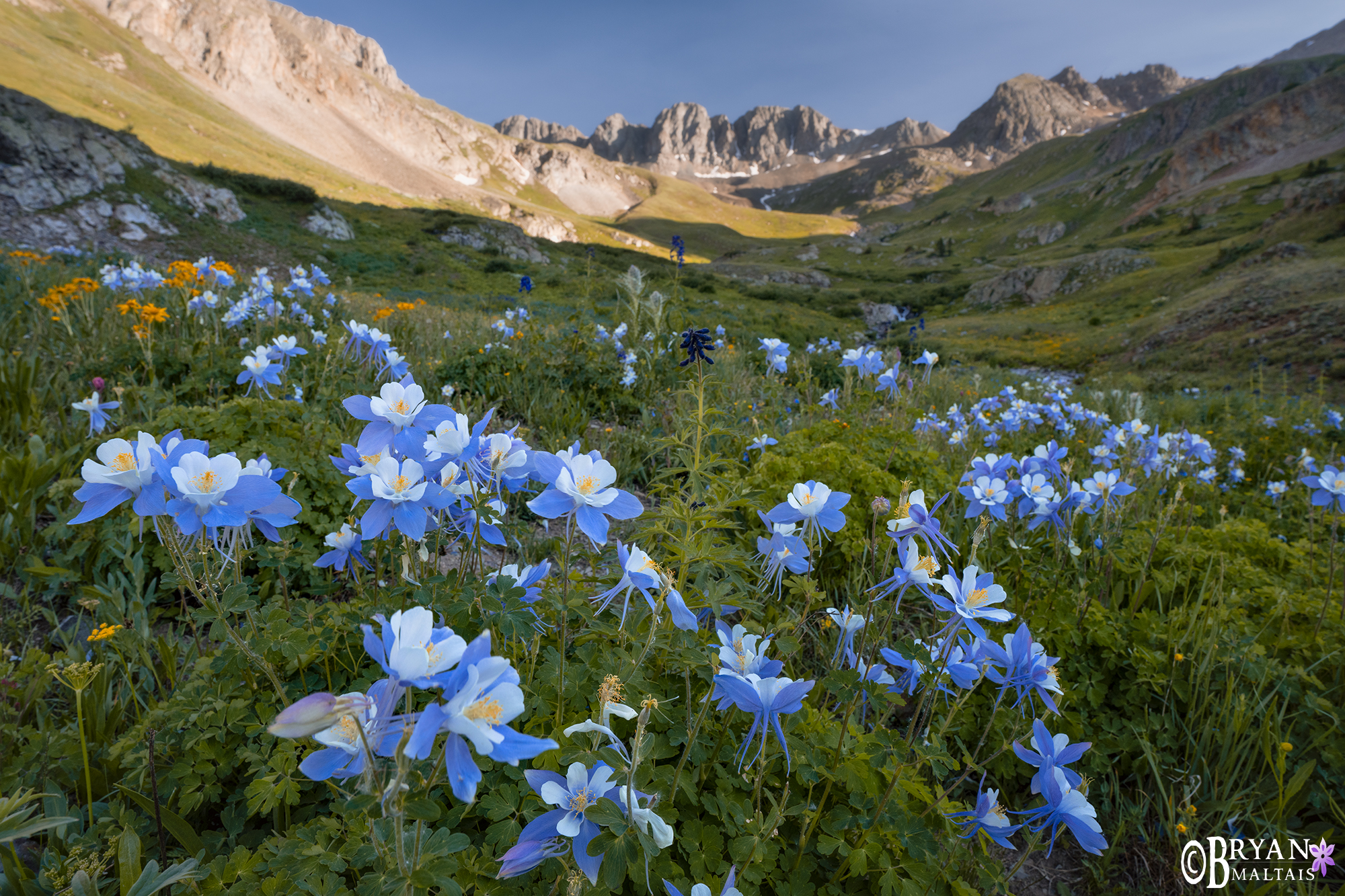 No two regions in Colorado offer the same composition of wildflowers. Crested Butte, for example, displays vast meadows that are the same color from a single species of flower. Picture entire valleys and hillsides yellow with Mule’s Ears and purple with Lupines. Other regions have green meadows with only modest wildflower concentrations. The meadows of the San Juan Mountains have a character all their own. Here a mixture of many colorful species grow closely together looking like the finale of a fireworks display.
No two regions in Colorado offer the same composition of wildflowers. Crested Butte, for example, displays vast meadows that are the same color from a single species of flower. Picture entire valleys and hillsides yellow with Mule’s Ears and purple with Lupines. Other regions have green meadows with only modest wildflower concentrations. The meadows of the San Juan Mountains have a character all their own. Here a mixture of many colorful species grow closely together looking like the finale of a fireworks display.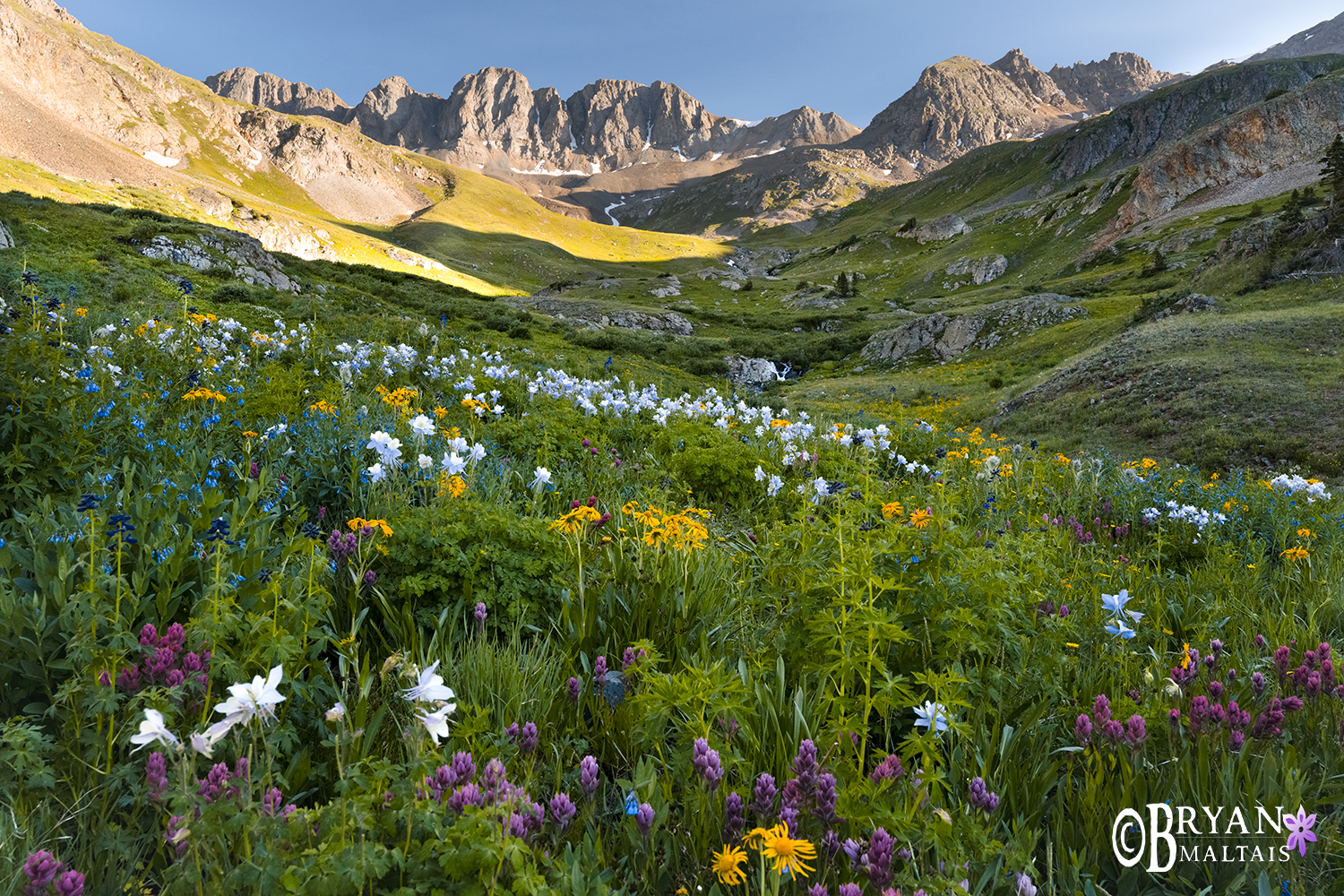
American Basin boasts a kaleidoscope of Rosy Paintbrush, Orange Sneezeweed, Colorado Columbine, Purple Fringe, Chiming-bells and Subalpine Larkspur to name a few.
5. Silverton, Colorado
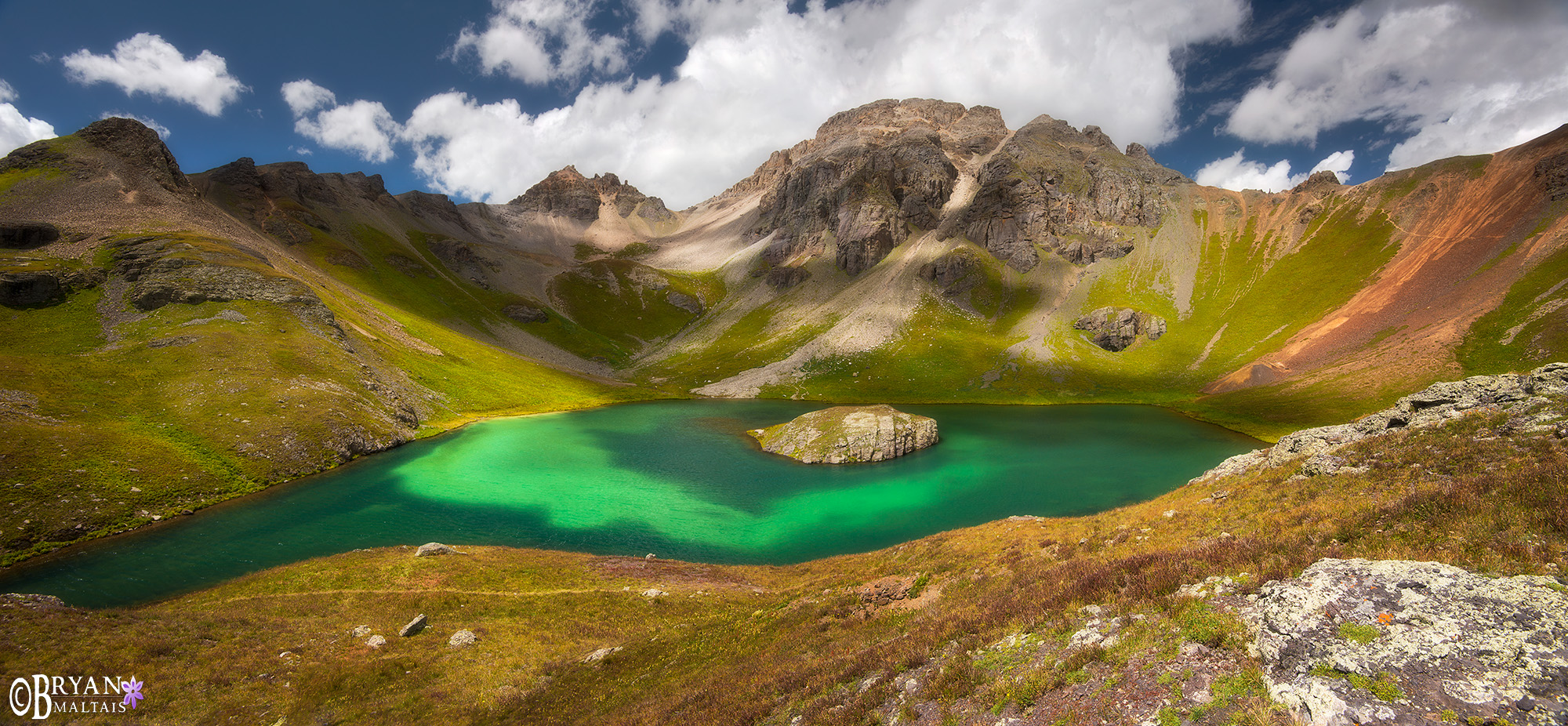 Silverton is near some of the steepest mountains and most colorful natural scenery in Colorado. Ice Lakes is a spectacular hike into the subalpine zone where a side trip takes you to Island Lake. Color intensity of the water is seasonal depending on the volume of dissolved minerals that have washed into the lake.
Silverton is near some of the steepest mountains and most colorful natural scenery in Colorado. Ice Lakes is a spectacular hike into the subalpine zone where a side trip takes you to Island Lake. Color intensity of the water is seasonal depending on the volume of dissolved minerals that have washed into the lake.
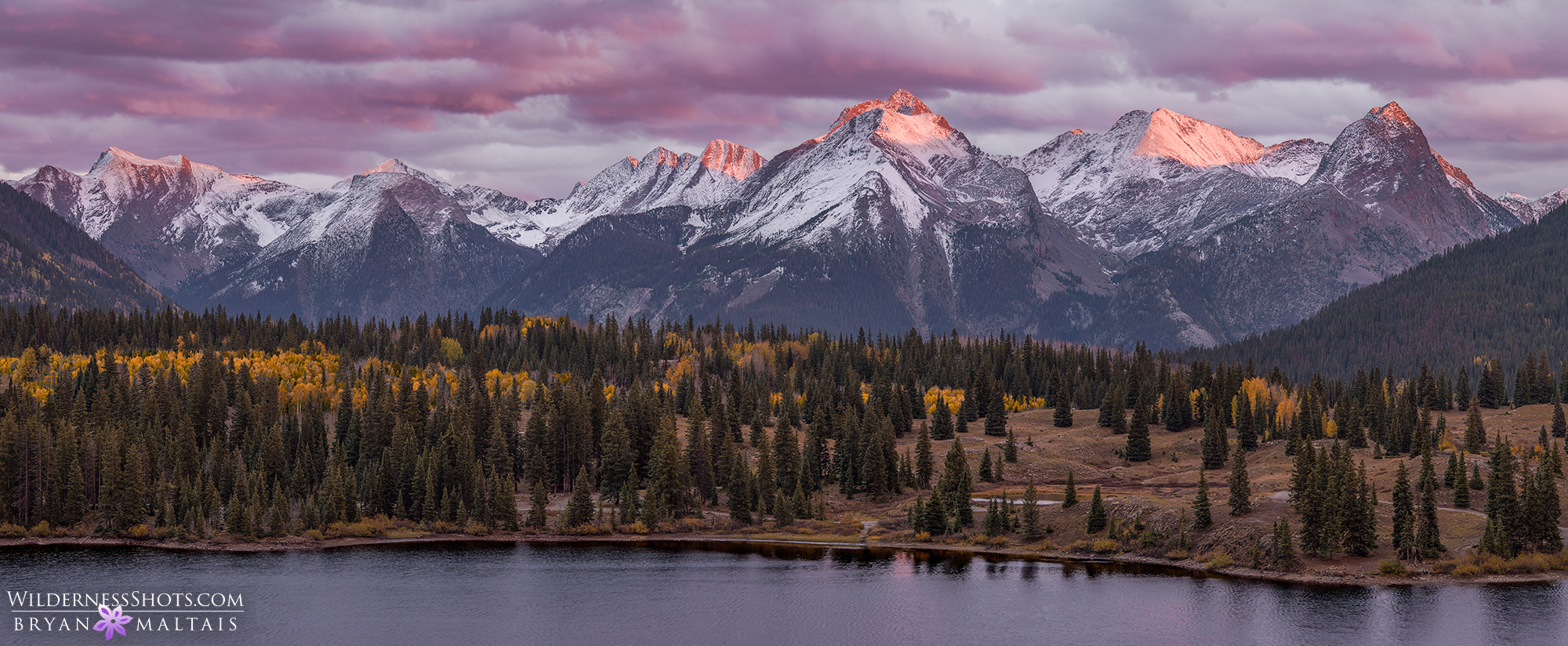 The Grenadiere Range as seen from Molas Lake is one of Colorado’s most striking and obtrusive mountains chains.
The Grenadiere Range as seen from Molas Lake is one of Colorado’s most striking and obtrusive mountains chains.

